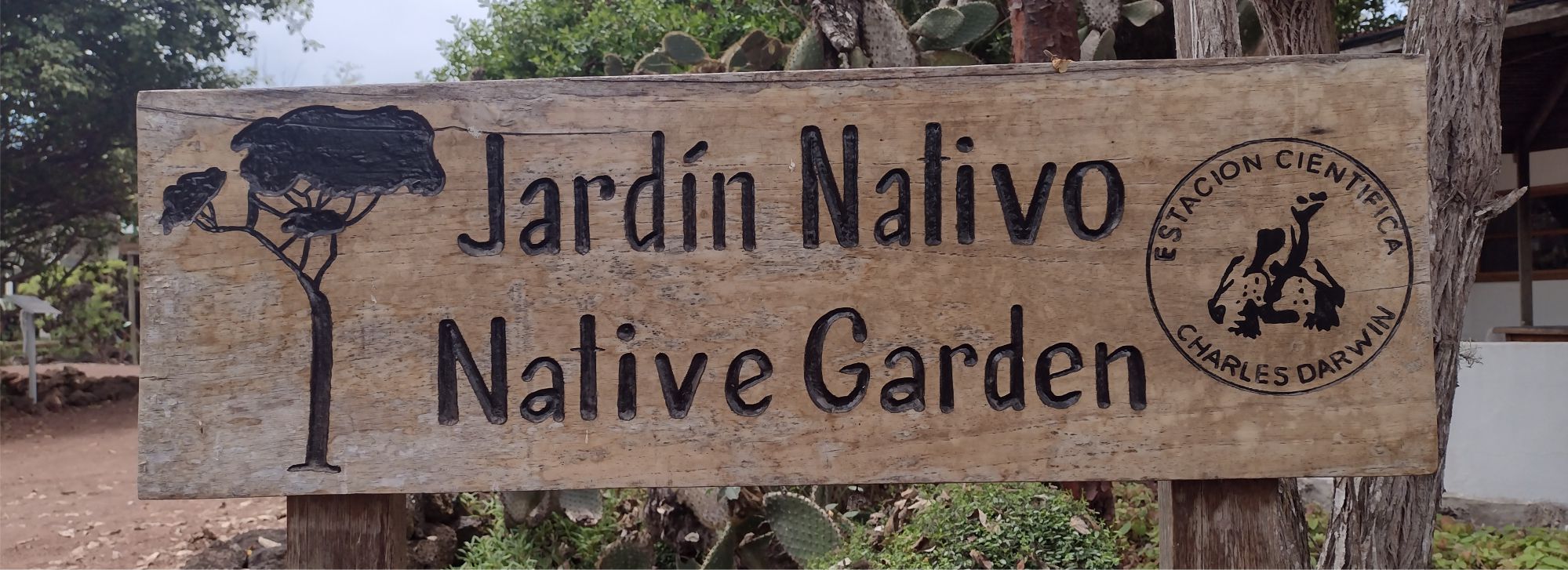Wooden signs
The Charles Darwin Research Station is strewn with signs: those that point out paths and destinations, those that identify buildings or spaces, those that inform, those that sometimes misinform...
Some of them are small works of craftsmanship, such as the one in the Unidad de Aislamiento para Estudios Entomológicos (Isolation Unit for Entomological Studies), decorated with a huge ant. Others are simpler but, even so, they are not devoid of charm: an example is the one that is usually at the entrance to the Library, or the one that, in the middle of the central path of the Station, indicates to disoriented visitors in which direction is Puerto Ayora.
It is extremely difficult (if not impossible) to know the origin of each of the old signs that still survive. However, it is possible to link them thanks to the stylistic patterns they display and share: those with carvings painted in blue and green, those with sober black letters and no adornment, those exuberant (such as the "Casa de sombra" sign, with its silhouetted tree), and those that could very well go unnoticed...
 ↔
↔
And there are those who appear in the photographs of the Charles Darwin Station almost from the beginning of its history. Like the one that says "Jardín Nativo" (Native Garden), and which is still standing next to the building that houses the Library, Archive and Museum area.
The signs make up a network of warnings, notices and signals that has been continually renewed throughout the six decades of the Station's history. They are essential to understand what was given importance to in each era, how each corner was identified, how the land was organized and divided, which were the busiest routes and which were the internal paths. Like other, generally ignored elements, the signs are part of CDF's tangible heritage, and their survival, or at least their preservation, should be guaranteed, since they are part of our social and collective history. One that is built by carefully linking a thousand details and many other small pieces.
[The photographs that illustrate this text were taken by Edgardo Civallero and Gregg Smith. The latter is a slide preserved in the CDF Archive. It was taken in November 1997, and features Charlotte Causton and Alan Tye].
Text & picture: Edgardo Civallero (edgardo.civallero@fcdarwin.org.ec).
Publication date: 1 October 2022
Last update: 1 October 2022
